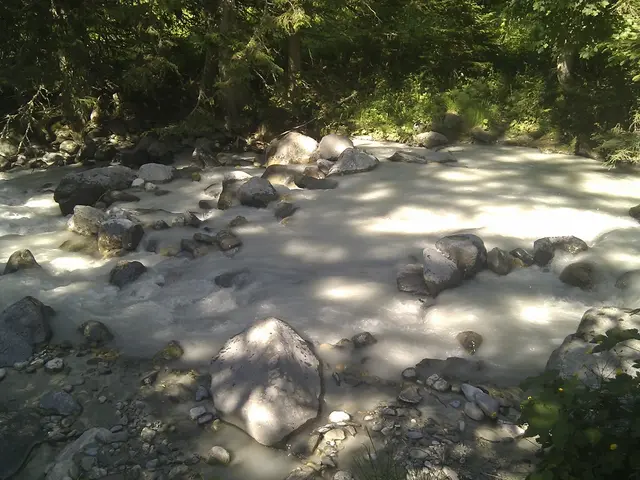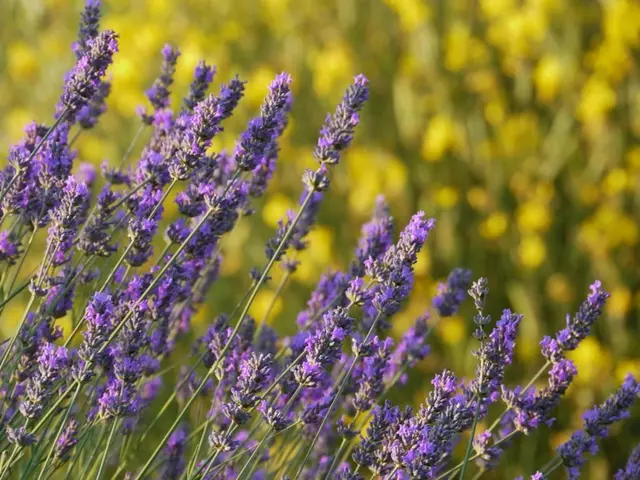Birds Endure Harm from Microplastics Pollution
Microplastic and nanoplastic contamination have become a pressing global issue, affecting birds worldwide. Recent studies have revealed the widespread presence of these pollutants in various bird species, both terrestrial and marine.
In Turkey, a 2025 study found microplastics in 50% of the bird species examined, with the short-toed snake eagle having the highest concentration [1]. Similarly, microplastics have been detected in the guts of birds and other marine life, emphasising the significant impact on ecosystems [1].
The sources of these contaminants often originate from discarded fishing gear and domestic sewage, common sources of plastic pollution in coastal areas [1]. Biofilms, communities of microorganisms attached to surfaces, can accumulate microplastics, facilitating their transfer to birds, particularly shorebirds [1].
Ingestion of microplastics can lead to health issues, such as inflammation and scarring of the digestive tract in birds, a condition known as plasticosis. This affects digestion, growth, and survival [4]. Additives in plastics may also leach out upon ingestion, causing endocrine disruption and other health issues [4].
Microplastic contamination not only harms birds but also compromises ecosystem functions. For instance, microplastics can alter the density of krill faecal pellets, reducing their ability to carry carbon to the ocean floor, affecting natural carbon sequestration processes [2].
Microplastics can bioaccumulate in birds, making them potential bioindicators for assessing ecological risks [3]. This highlights the need for ongoing monitoring and study of microplastic impacts on bird populations.
India has been identified as a significant contributor to microplastic pollution, discharging an estimated 391,879 tonnes into its waterbodies in 2024, making it the second leading polluter after China [6]. Over the past couple of years, shorelines across ten important wintering grounds on India’s west coast have reported the prevalence of microplastics [7].
Addressing this issue requires a multi-faceted approach. Efforts to reduce plastic pollution and develop effective remediation strategies are crucial to mitigate the impacts on birds and ecosystems [5]. Local projects aimed at managing plastic waste can produce results in a short period of time. An important step towards keeping birds free from the dangers of plastic ingestion is to make coastal belts totally free from plastic use [8].
The contamination of birds and the consequent bioaccumulation of microplastics highlight the pervasive nature of pollution of water bodies, including oceans [9]. Researchers have even found microplastics and nanoplastics exposure in the lungs of 51 species of birds, with an average abundance of 221.20 particles per species and 416.22 microplastics per gram of lung tissue [10].
In conclusion, the contamination of birds by microplastics and nanoplastics is a pressing global issue with significant health and ecosystem implications. Ongoing research and policy initiatives are necessary to address the pervasive nature of microplastic pollution in both terrestrial and marine environments.
References: [1] [Study in Turkey, 2025] [2] [Study on krill faecal pellets] [3] [Study on bioaccumulation and bioindicators] [4] [Study on health impacts on birds] [5] [Efforts to reduce plastic pollution and develop remediation strategies] [6] [India's microplastic discharge in 2024] [7] [Presence of microplastics on India's west coast] [8] [Local projects for managing plastic waste] [9] [Contamination of birds and the pollution of water bodies] [10] [Study on microplastics in bird lungs]
- The SDG (Sustainable Development Goal) 14 aims to protect marine life and reduce pollution like microplastics, affecting bird health globally.
- In the realm of environmental science, understanding plastic pollution's impact on birds requires tireless study and data collection.
- The automotive industry, along with manufacturing, is a significant contributor to plastic pollution, which eventually finds its way into the environment.
- Financing for sustainable solutions in businesses, including small ones, is crucial in the fight against carbon emissions and plastic pollution.
- Renewable energy sources can help reduce dependency on fossil fuels, lowering carbon emissions and mitigating climate-change effects.
- Retail businesses can play a role in reducing plastic waste by using eco-friendly packaging options for their products.
- Entrepreneurship in the field of environmental science can lead to innovative solutions for managing plastic waste and preventing its spread.
- Interior design can incorporate sustainable materials and designs to reduce the use of plastic and contribute to a greener lifestyle.
- Cooking at home can help reduce waste from packaging and takeout containers, thus lowering plastic pollution.
- Transportation options like electric vehicles and bicycles can help reduce carbon emissions and lower our impact on the environment.
- Leadership in environmental matters requires a commitment to diversity and inclusion, ensuring that all voices are heard in the fight against plastic pollution.
- Lifestyle choices like reducing, reusing, and recycling can significantly impact our contribution to plastic pollution.
- Outdoor living spaces can be designed to incorporate native plants that require minimal watering and are not harmful to bird health.
- Food and drink industries need to consider the impact of their packaging on wildlife, including the use of microplastics.
- Dining establishments can contribute to a more sustainable future by reducing plastic waste in their operations.
- The automotive industry should invest in research and development of eco-friendly materials for their products to combat microplastic pollution.
- Wealth management firms can provide investments in businesses focusing on sustainable living and reducing plastic pollution.
- Home improvement projects can incorporate eco-friendly materials and practices to reduce carbon footprint and plastic pollution.
- Beverages companies should consider packaging alternatives to reduce their contribution to plastic pollution, especially in the marine environment.
- The business world offers diverse careers in sectors focused on reducing plastic pollution and promoting sustainable living.
- The housing market can be influenced by the demand for homes with sustainable features that reduce carbon emissions and waste.
- Personal finance can be managed sustainably by making eco-friendly investments and budgeting for green alternatives.
- Recipes can be adapted to reduce waste and incorporate ingredients from global cuisines, promoting a more sustainable food culture.
- The banking and insurance industries can provide incentives and opportunities for individuals to invest in sustainable living and reduce their environmental impact.




